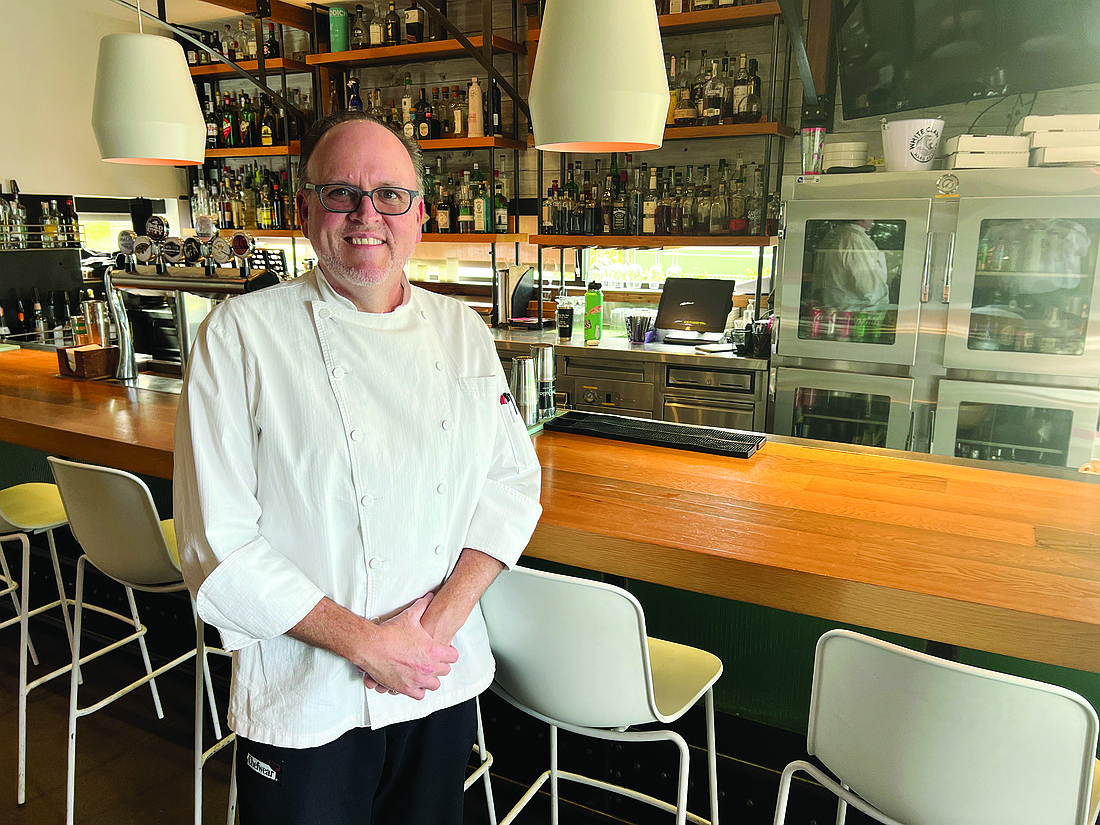
Chef Tom Gray doesn’t like raising menu prices.
He says don’t blame restaurant owners. Look to voters as a primary reason for escalating costs.
In 2020, Florida voters approved Amendment 2 to gradually increase the state’s minimum wage to $15 an hour by 2026. It now is $12.
Raising the minimum wage $1 a year until it reaches $15 per hour may have sounded noble.
But providing a “living wage” is costing you money, Gray said.
Gray, 55, owner and executive chef at Prati Italia at 4972 Big Island Drive in the St. Johns Town Center area, has spent his adult life in kitchens.
Before opening Moxie in that space 10 years ago he was the executive chef at Bistro AIX.
Trained at the Culinary Institute of America in Hyde Park, New York, he opened the school’s restaurant at its West Coast location in Napa Valley, California.
Gray and his wife, Sarah Marie Johnston, also own Town Hall in San Marco.
After he changed the name and cuisine from Moxie to Prati Italia in January 2020, a government mandate shut his doors because of the coronavirus pandemic in March.
That was gradually lifted, with restaurants able to operate at 100% capacity in September 2020.
It has been Gray’s longtime practice to pay his employees more than minimum wage. However, with every increase in it, his employees want a raise as well.
It is not just his employment costs. It starts with purveyors.
“If the guy scooping ice to put on your fish makes $15 an hour and that means the guy that cuts your fish wants $30 an hour. So that means all of a sudden that fish you used to buy wholesale at $11 a pound is now at $18 a pound wholesale so that all that starts to quickly multiply,” Gray said.
In the 1990s servers made as little as $2.13 per hour but they were tipped employees. Today they still receive tips but are paid $9 an hour. He estimates that his servers, with tips, are averaging around $30 per hour.
Other costs behind the scenes also are cramping his budget. It may cost Gray about $70,000 to insure his 7,500-square-foot restaurant next year.
“The cost of property insurance is going through the roof. Last year, we had to absorb a 46% increase. And this year our brokers are warning we could be looking at a 100% increase over that,” Gray said.
Just as supermarket prices for consumers have jumped, the same is happening in the restaurant industry. And it is bound by the price of food that day or week.
It’s not like a construction company that can buy and store building materials when prices are low. Food is perishable, and scratch kitchens like Prati Italia rarely use frozen foods.
Earlier this year, the price of a box of cauliflower rose to about $80.
“You can’t exactly list cauliflower as a market price item right next to the lobster,” Gray said.
Raising prices has its drawbacks. Gray said he can absorb a 10-day price increase. But if that price is going to stay high for 30 days, or become the norm, restaurateurs have to make a choice, Gray said.
“So then you have to decide do we pull something off the menu or do a menu reprint because all those things cost more?
“Or do you absorb that spike knowing it should settle in X number of days?”
The pandemic has lingering effects besides increasing operation costs. Before it, Gray’s staff numbered 110. Today he has 60 to 70.
He suspects that many servers were wary of being around people at first. Now, finding experienced staff is difficult. Besides, he doubts he could afford a staff that large today.
He has worked around the limited staffing by serving dinner seven nights and only serving a lunch or brunch on Friday, Saturday and Sunday.